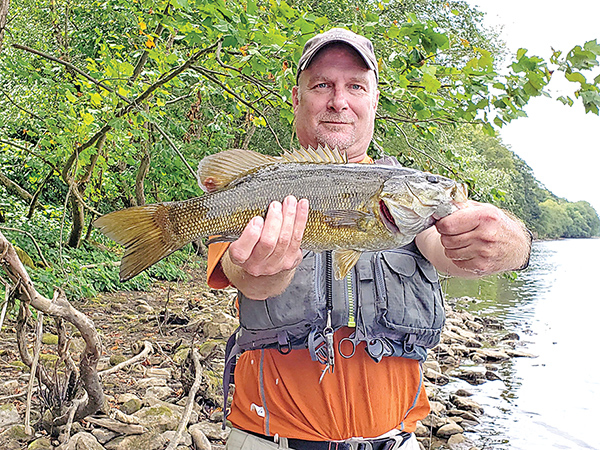I know a lot of us outdoor types are getting into the hunting scene these days, but it would be a big mistake to think that bass season is over. Actually, some of the season’s best bass fishing is in the fall — maybe even into November — and surface lures can still be productive. Another little twist that may surprise some bass fishermen is that a fly rod and a bass bug can be an excellent choice for some really exciting surface action.
Both largemouth and smallmouth bass will readily take a surface popper, and we have several lakes, streams, and rivers that will produce. I’m an avid bass fisherman, with several tackleboxes full of lures and an assortment of rods and reels, but years ago, I opted to hit a local waterway with my fly rod and an assortment of bass bugs — I wasn’t disappointed. A white Gaines popper put a frequent bend in my fly rod, and I quickly added another bass fishing technique to my arsenal.
A dedicated trout-fishing friend of mine recently told me how he too discovered the excitement of catching bass on a fly rod and a surface popper. Doug Zehner of Muncy is a diehard trout fisherman who specializes in catching trout with a fly rod, and he is just as adamant about tying his own trout fly patterns. When Doug recently discovered the fun of taking bass with a fly rod and popper, he also began making his own “frog type” patterns. Now understand, there’s no shortage of surface poppers for bass fishing in store fishing departments, but as Doug puts it, he likes to go “above and beyond.”
Last week, I spent a couple of hours at Doug’s place, watching him create one of his frog patterns. He often uses a size 2 Gamakatsu “stinger hook.” He makes the frog’s body from one-eighth inch thick closed cell craft foam that he got at a craft store. After making several folds and cuts, the body of the frog is secured to the hook. Super glue and magic markers move the frog closer to completion. He makes his own frog eyes as well — tiny black circles are punched out of a piece of electrician’s tape and then placed in the center of a slightly larger green circle that was punched out of a plastic bag that contained some kind of snack food. On one day of fishing, Doug told me he picked up well over a dozen bass on his frog creation.
While you may get by using your trout fly rod for popper fishing, it’s probably better if you can specialize a bit. Most fly rod bass fishermen will opt for an 8-9 foot rod. The longer rod makes it easier to cast the larger, more wind resistant popper. As for line, you will probably want a weight forward, 7 or 8-weight floating line — again to help cast the more wind resistant lure. You may want to go with at least 6 or 8-pound test tippet, maybe even heavier if you are fishing around weeds or wood structure.
When fishing moving water, Doug prefers fishing the flat water in the lower stretches of the pool. You may also want to try some of the moving water towards the head of the pool.
In lakes, you are probably better off fishing in shallow water and along the shoreline or submerged weed edges. Most popper enthusiasts will let the ripples from the popper settle a bit before giving the lure a little tug. The retrieve is often an erratic stop and go.
As the cooler weather approaches, bass will feed more heavily, and mid-day can be the best time since the mid-day sun warms the cooling water.
Give bass bugging a try. You may find it’s a great new tool to add to your arsenal, and who knows — you may want to start making your own frog poppers.





Leave a Comment
Your email address will not be published. Required fields are marked with *